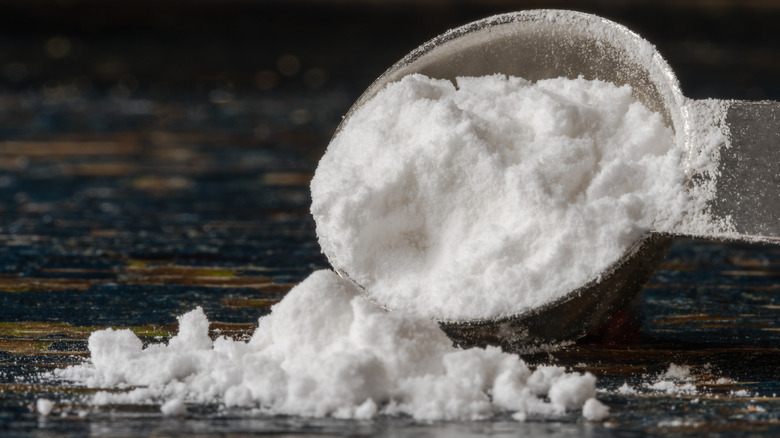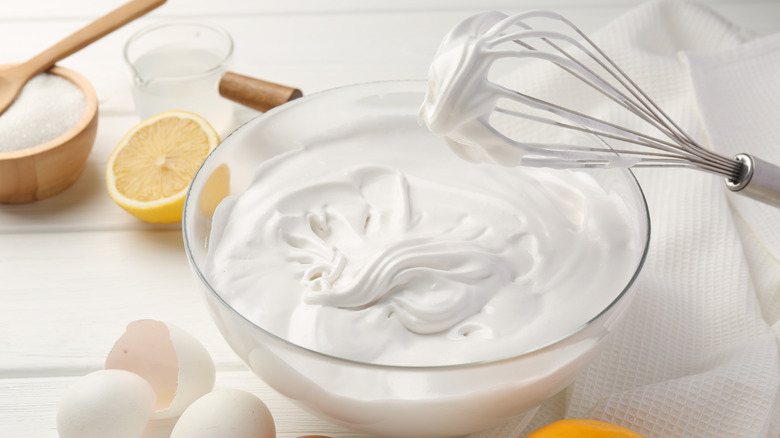The Best Substitute For Cream Of Tartar In Baked Goods
If it's not the main component of everyone's favorite seafood dipping sauce, then what is cream of tartar? It's a powdered acid that, when combined with finely ground baking soda, produces baking powder, an all-in-one leavening agent. As great as cream of tartar is, sometimes you just don't have any on hand, so it's vital to know its substitutes. We turned to Dennis Littley, chef and recipe expert at Ask Chef Dennis, to learn about the best swap for this ingredient.
"Cream of tartar affects both the texture and rise of cookies by stabilizing whipped egg whites and creating a slightly tangy flavor," Littley said. "It's commonly used in snickerdoodles to give them that signature soft texture and slight tang." The acid in cream of tartar prevents protein molecules from bonding and sugar from crystallizing. In addition to providing a bit of tangy flavor, this ingredient is a great way to make baked goods chewy rather than crispy.
"If you don't have cream of tartar, lemon juice or white vinegar can work as substitutes, but they may slightly alter the flavor," Littley went on. Lemon juice has an acidic pH of about 2, most vinegars sit between 2.4 and 3.4, and cream of tartar has a more standard pH of 3.5. While white vinegar's pH balance may sit closer to that of cream of tartar, some people may prefer the fruity flavors imparted by lemon juice. Regardless, either one is an effective substitute and will incorporate into recipes in similar ways.
How to substitute lemon juice or vinegar for cream of tartar
Balancing the substitution of a powder for a liquid can be tricky, especially when their pH balances differ. As a general rule, you can substitute ½ teaspoon of cream of tartar for 1 teaspoon of lemon juice or white vinegar. Either substitute works, whether you want to prevent meringue decorations from growing soggy or make soft and chewy gluten-free chocolate chip cookies, but you have to be able to guarantee your substitute's acidity.
The FDA has strict regulations on the acidity of bottled lemon juice, but not lemons themselves. If you're going to make a substitution for cream of tartar, it's better to use bottled lemon juice over fresh to achieve the same texture in baked goods, as lemons may vary in acidity based on type and growing conditions. If you were hoping for more lemony flavor in your baked goods, try adding some lemon zest to your recipe instead.
The FDA has similar regulations for white vinegar, requiring it to "contain 4 grams of acetic acid per 100 milliliters." However, this only applies to natural vinegars. Some may come diluted, though they're required to display this on their label. Be sure to double-check your bottle before you add any to your recipe, or you risk sabotaging your baked goods' texture. If you're worried about the vinegar's flavor leaking through, try adding a bit of fruit zest or jam to cover it up.


